GOLD Learning Labour & Delivery Online Symposium 2023
The GOLD Learning Labour & Delivery Online Symposium provides the latest evidence-based continuing education for health care professionals working with birthing families. Research tells us that health care professionals have an important role to play in helping to create a safe and positive birth experience that helps set parents and their infants up for success. Enhance your clinical skills and learn more about the latest research on upright pushing, fetal monitoring, posterior babies, tension in the pelvis, neonatal resuscitation, parent centered care, self-care for nurses and other professionals and more.
All presentations are now online for on-demand access. This symposium is approved for 8 Nurse Contact Hours, 8 CMEs, 8 ACM CPD Hours, 0.8 MEAC Midwifery CEUs & 7 R-CERPs & 6 ACNM Contact Hours.
Want to Sign Up as a Group of 5 or more? Contact us at [email protected]
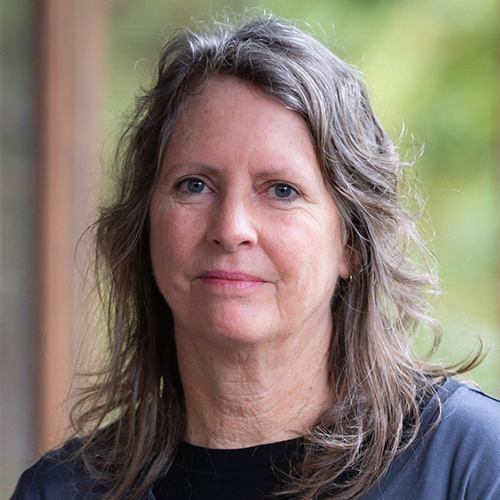

Jenny Blyth has been supporting women & parents through natural birth for over 40 years. She is an independent birth educator, birthworker, bodyworker, Associate Practitioner of Ortho-Bionomy, Spinning Babies® Approved Trainer, Spinning Babies® Aware Practitioner & Trainer, & Internal Pelvic Release Work Practitioner & Trainer. Her particular focus is on body awareness & body preparation for birth & recovery, & encouraging greater self-responsibility in parents - to realise potential in birth & reduce birth trauma. She specialises in pelvic bodywork for wellbeing, balance, comfort & healing. Other birthwork interests include nourishing birthing wisdom & challenging beliefs & assumptions about birth care. Jenny regularly facilitates workshops in Australia & overseas. She is project co-ordinator for Lao Birthwork, teaching hands-on & emergency skills to health staff in remote areas of Northern Laos. She is also an author – The Down to Earth Birth Book, Birthwork - & filmmaker -The Big Stretch films & A World of Birthworkers. Jenny lives in the Australian bush with her partner, and is the mother of 3 grown children and grandmother of 3.
Jenny Blyth has been supporting women & parents through natural birth for over 40 years. She is an independent birth educator, birthworker, bodyworker, Associate Practitioner of Ortho-Bionomy, Spinning Babies® Approved Trainer, Spinning Babies® Aware Practitioner & Trainer, & Internal Pelvic Release Work Practitioner & Trainer. Her particular focus is on body awareness & body preparation for birth & recovery, & encouraging greater self-responsibility in parents - to realise potential in birth & reduce birth trauma. She specialises in pelvic bodywork for wellbeing, balance, comfort & healing. Other birthwork interests include nourishing birthing wisdom & challenging beliefs & assumptions about birth care. Jenny regularly facilitates workshops in Australia & overseas. She is project co-ordinator for Lao Birthwork, teaching hands-on & emergency skills to health staff in remote areas of Northern Laos. She is also an author – The Down to Earth Birth Book, Birthwork - & filmmaker -The Big Stretch films & A World of Birthworkers. Jenny lives in the Australian bush with her partner, and is the mother of 3 grown children and grandmother of 3.
1. Describe appropriate and respectful negotiation regarding external touching of the pelvic soft tissues in labour
2. Explain the physiology of why the vibratory nature of jiggling calms the nervous system, relaxes soft tissue, relieves discomfort and facilitates ease of labour
3. Compare when pelvic jiggling may be appropriately applied in birth and when contra-indications apply for jiggling
Jiggling the external pelvic soft tissues by hand is a highly effective and recommended way to mobilize the pelvis, release tension, synchronize body systems, create more space to optimise or change the baby's position, and calm the nervous system – in pregnancy and in birth. It has also been known to facilitate labour progress in general, and in particular when labour has stalled. Highly enjoyable and simple to implement, it is an easy-to-teach practice for both care-providers and couples. This presentation will cover the why and how of pelvic jiggling, including touch considerations and contraindications.


Dr. Britta Bushnell (she/her) is author of Transformed by Birth, host of the podcast Transformed, veteran childbirth educator, celebrated speaker, mythologist, wife and mother, and specialist in childbirth, relationship, and parenting. For over 20 years, Dr. Bushnell has worked with individuals and couples as they prepare for the life-changing experience of giving birth. Her work with parents has been enriched by her doctoral work in mythology and psychology, her years spent as a co-owner of Birthing From Within, as well as her dedicated study of solution-focused brief therapy, storytelling, and skills for supporting intimate relationships while parenting.
Britta is an engaging teacher, speaker, and presenter. Whether addressing a room of expectant parents, new mothers, or seasoned birth professionals, Britta has a way of captivating and inspiring them all. She has presented at conferences such as DONA International, MANA, ICEA, and Lamaze. Additionally, Britta has been featured on several popular podcasts including Informed Pregnancy, Birthful, and Atomic Moms. In 2016, in recognition of her transformative childbirth classes, Britta was awarded "Educator of the Year" by the Southern California Doula Association (DASC).
Topic: Awakening the Parent: Are You Supporting or Sabotaging Your Client’s Transformation? - [View Abstract]
1. Following this Session, participants will be able to describe the impact power dynamics in the labor room negatively impact outcomes for birthing families
2. Following this Session, participants will be able to list archetypes active in the labor room.
3. Following this Session, participants will be able to apply 3 new tools for responding to labor room dynamics.
Beneath the surface of every labor and delivery room interaction between physicians, nurses, and patients (as well as their partners) vibrate the pressures of power. Who is in charge? Regardless of the stated beliefs or legal truth about who IS in charge, the dance between the characters in the labor room often plays out archetypally. Archetypes are a recurrent symbol or motif found in literature, art, or mythology that live within the unconscious influencing how individuals behave, think, and feel. While many archetypal energies are possible during labor, the dominant archetypal energies active in a labor room tend to vacillate between that of Caretaker, Orphan, Ruler, Hero, Innocent, and Warrior. Nurses, often drawn to the career to help others, connect with the Caretaker archetype. However, due in part to hierarchical structures within the hospital setting, nurses can be left feeling unseen, undervalued, or powerless activating the Orphan archetype. Comparable patterns can be observed in obstetricians with the Ruler and Hero and in parents with the Innocent and Warrior archetypes. Without consciousness of the power dynamics between these archetypal energies, satisfaction in both the process and outcome is often fleeting for parents and can lead to burnout in professionals. Greater understanding of the needs of each activated archetype provides individuals needed guidance in how to better navigate labor room power dynamics and why doing so matters profoundly.


Maggie is a nurse, educator, and writer.
She began her nursing career in 2009 and has since practiced in hospitals and communities nationwide, primarily in labor and birth environments. Maggie maintains a bedside practice at a community hospital in Pennsylvania, in addition to her non-profit work as Founding Executive Director of Your BIRTH Partners.
Maggie is currently pursuing her PhD in Nursing and loves educating, mentoring, and learning alongside other nurses. Her research interests are trauma-informed care, secondary traumatic stress, trauma-responsive work environments, and nurse identity. She has always enjoyed writing, both through blogs and in scholarly environments. Much of her recent pursuits have focused on authoring a transformational memoir and contributing to academic journals.
Her advocacy focuses on improving perinatal care in hospital environments through trauma-informed care and community collaboration. When she's not dreaming up good trouble with other changemakers, she's doing yoga, reading a book, traveling, indulging in delicious food, soaking in fresh air outside, or hanging with her awesome partner and kids.
1. Describe the history & patterns of saviorism in perinatal nursing
2. Define the impact of saviorism on nurse-patient relationships
3. Select care practices centered on advocacy & autonomy
The role of nurses has often been dictated by those outside the profession. First, we were seen as doctors' handmaidens, which informed a collective consciousness that we were only valuable in support of paternalistic healthcare. As the role of nurses expanded, the public came to recognize our unique skills, identified us as the most trustworthy profession over two decades, and labeled us heroes. In response, we have positioned ourselves as a neutral identity that is "just there to help." However, this helper or savior identity has several negative ramifications including a preoccupation with how our care might be judged in the event of an unexpected outcome, which ultimately creates a divide between us & those in our care. Nurses benefit from identification of and reflection on their motivation for pursuing nursing, their current care practices, and how they can shift their mindset to release the rigidity, guilt, and fear that is associated with saviorism. We cannot allow patterns of saviorism to continue to dominate our profession. The health of our patients & ourselves depends on us stepping away from "helping" and into a standard of trauma-informed advocacy.
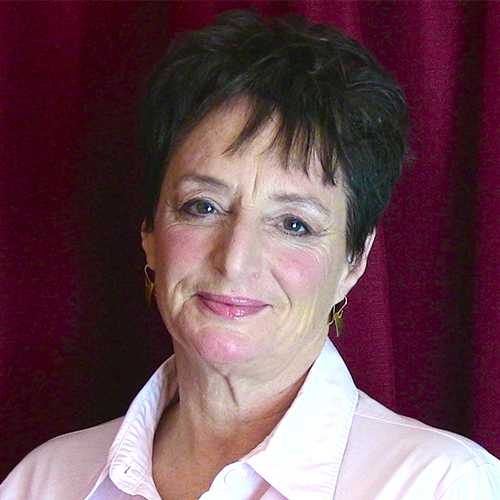

Karen H. Strange is a Certified Professional Midwife (1996), American Academy of Pediatrics/Neonatal Resuscitation Program Instructor (1992).
She is founder of the Integrative Resuscitation of the Newborn workshop, which includes the physiology of newborn transition. She teaches the “when, why and how” of helping newborns that are either not breathing or not breathing well, with incredible clarity. She helps the provider have a sense of what the baby is experiencing which leads to a more appropriate response to newborns in need. Karen has done over 1,000 hours of debrief/case reviews regarding resuscitation. She is an international speaker and has taught over 14,000 people worldwide. There are many neonatal resuscitation instructors but Karen teaches practical neonatal resuscitation, regardless of the place of birth. And her teachings instill a strong sense of confidence and competence in providers, so they can respond in the least traumatic way.
Topic: The Remarkable Transition From Liquid to Air at Birth: The Implications for Neonatal Resuscitation - [View Abstract]
Topic: When You Know Better, Do Better - [View Abstract]
Topic: When, Why and How to Breathe for Baby at Birth: More than Neonatal Resuscitation and the Failures in Resuscitation - [View Abstract]
1. Describe the most likely reason a baby is having difficulty breathing at or around the time of birth.
2. Describe the most probable course of action to take in a situation where a baby is not breathing or experiencing difficulty breathing, with an emphasis on minimizing trauma.
3. Explain the transition that takes place for each baby at the time of birth.
Karen Strange delves into the subject that she knows best: neonatal resuscitation! Karen has accumulated over 1000+ hours of case reviews from birth professionals across the globe. From these debriefs, she’s identified exactly what gets missed, typical misunderstandings and the role that fear and panic play when delivering skills. In this presentation, Karen clearly explains and defines the when, why and how to respond to a newborn either not breathing or not breathing well, while providing trauma-free care regardless of where the baby might be born. At a fully equipped hospital, in a developing country or at home. You’ll leave her presentation with a new sense of clarity and deeper understanding as you confidently respond to babies who need your help.
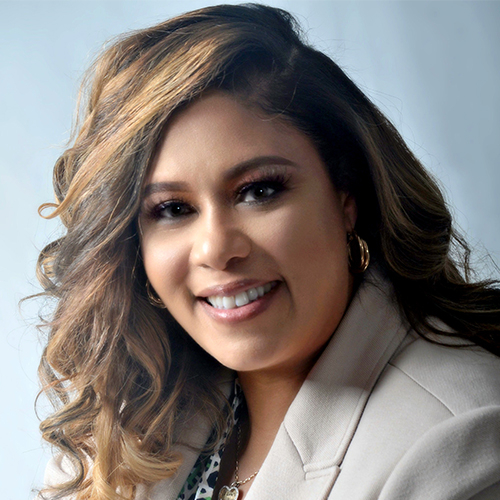

Lashea has been practicing in the area of obstetrical/perinatal nursing for nearly 26 years. Her clinical and educational experience and expertise span labor/delivery, antepartum and mother/baby areas. Lashea has worked as a board-certified clinical nurse specialist for women’s services at a large healthcare system, she was a nursing instructor and a previous perinatal outreach educator. These roles allowed her the ability to provide continual high-risk perinatal education to various hospitals and to reach audiences across her region. This has led to her current role and success as founder and owner of her own nursing mentoring and education consulting company Perinatal Potpourri. She is also a Designated Instructor Trainer in Fetal Monitoring and Obstetric Patient Safety through AWHONN. Lashea holds two certifications through NCC and currently provides in-services and seminars nationally for Inpatient OB and EFM reviews, respectively.
In addition to being an active AWHONN member, Lashea was recently elected as the Vice Chair of the AWHONN Section Advisory Committee. She was appointed to this position because of her activism and success as the 2-term elected Georgia section chair. LaShea was appointed as the lead for Georgia in the AWHONN Postpartum Hemorrhage & Empowering Women projects. She was selected as the lead facilitator in the state of Georgia to assist with the rising rate of maternal deaths because she has successfully moved her region to become more active with lectures, networking, and current trends. Lashea’s expertise in this area is demonstrated in her most recent honor, AWHONN's highest honor the Distinguished Professional Service Award Winner of 2022 and The Award of Excellence in Education, respectively. It's also noteworthy to mention she has won the March of Dimes 2018 Georgia Nurse of the Year Award and the 2015 AWHONN Award of Excellence in Community Service. She is an energetic speaker, whose goal is to fully engage the audience in her presentations, leaving them excited and ready to learn more.
1. Describe electronic fetal monitoring (EFM) patterns using National Institute of Child Health and Development (NICHD) terminology
2. Explain the physiology of acid base interpretation
3. Compare and contrast categories and fetal heart rate patterns and their associated interventions
This presentation will assist labor & delivery nurses in sharpening their skills and foundation for interpreting fetal heart monitoring tracings. Beginning with a brief review of the basic physiology of acid base interpretation, we will discuss appropriate terminology for electronic fetal monitoring (EFM) using the terminology established by the National Institute of Child Health and Development. We will compare and contrast categories of fetal heart rate patterns and discuss their associated interventions. Finally, we will establish a core set of elements for creating a plan with the patient and care team for the physiologic management of the second stage of labor. This presentation offers labor and delivery nurses the opportunity to ensure their ability to read and respond to EFM during labor is up to date and consistent with national and international guidelines.
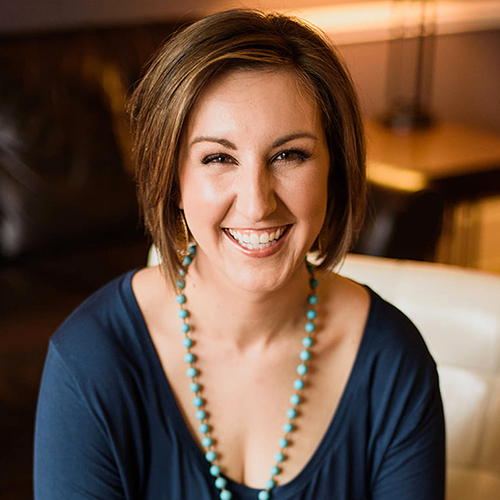

Mandy Irby, pronouns are she/her, is a board certified labor nurse with 13 years of experience supporting survivors of assault and trauma through pregnancy, birth planning, and at their bedside during childbirth and pregnancy loss. After experiencing her own birth trauma, she quickly learned that the birth care system is NOT centered on human rights, patient choice, and the individual experience. In 2020, Mandy made education a full-time career. She now teaches and supports parents and nurses how to better center voice, choice, and physiology in birth. It's Mandy’s mission to change birth culture so that it's parent-centered, trauma-informed, and safe for all.
Mandy enjoys teaching in-person, in whole-team learning: Peanut Ball, Labor Support Skills and Trauma-Informed Care At the Bedside workshops. She also supports local parents with small-group Spinning Babies® Parent Classes when in-person learning is safest. Mandy is also an international educator through her online, on-demand childbirth ed classes and she supports anxious parents-to-be with virtual, one-on-one trauma-informed birth strategy sessions. She’s the co-founder of Fearless Birth, Delivered, founder and owner of The Birth Nurse®, and a proud co-creator of the BRAND NEW Trauma-Informed Birth Nurse Program. As a creative educator, Mandy is also the co-author of an Amazon best-seller, Baby Got VBAC, and reaches millions of viewers each month through her engaging, tongue-in-cheek social media platforms.
When she’s not working from home, Mandy might be found at any local plant nursery adding to her, some may say, out-of-control house plant collection. She’s a serial craft starter and non-finisher, loves walking her doodle puppy, and playing in the creek with her 2 kids.
Topic: Trauma-Informed Care: A Guide to Patient Advocacy for Trauma Survivors - [View Abstract]
1. Describe the concept of nursing advocacy and the realities of prioritizing patients' autonomy
2. List the 5 steps to overcome the most common barriers to upright pushing positions.
3. Explain ways in which patient and staff safety can be preserved while grounding care decisions in the patient’s power.
All of the evidence, professional organizations, and birth physiology supports giving birth in a variety of positions but somehow, despite nurses' best efforts, most birth givers end up in a supine position. Learn the powerful, trauma-informed steps to advocate for your labor and birth patients in upright pushing positions. Join this lecture, discussion, and demonstration as we identify and demonstrate the 5 simple steps to overcoming these barriers to upright pushing.


Jennifer Averill Moffitt, CNM, MSN, MBCPTc, is a nurse-midwife and the perinatal services manager at the Family Health Center of Worcester in Massachusetts as well as the Director of Community Partnerships and a senior faculty member at the Mindful Birthing and Parenting Foundation. Jen has been teaching the Mindfulness-Based Childbirth and Parenting (MBCP) program since 2014, after training intensively with MBCP founder, Nancy Bardacke, CNM, MA, MBCPTc.
As a Fulbright scholar and perinatal professional, Jen has dedicated her career to working with high-risk, marginalized, and underserved populations. Her passion for the intersectionality of mindfulness, birth, early parenting, and health equity – as both intervention and prevention – has led Jen to devote herself to training and mentoring perinatal and mental health professionals to facilitate the MBCP program across the globe.
The mother of two spirited teenagers and a 20+ year mindfulness practitioner, Jen also brings a wealth of personal experience, humility, and passion to her work.
1. Define "mindfulness", including what it is, and what it isn't.
2. Describe the experience of a brief mindfulness practice.
3. Explain the physiology of labor pain, and the difference between "pain" and "suffering", in labor and in life
Bringing the practices of mindfulness to our patients and ourselves can significantly impact our patients' relationship to pain and fear in labor, birth, and life. In this hour long presentation, participants will have an opportunity to experience a mindfulness practice and learn ways to implement mindfulness in childbirth and parenting. Participants will be exposed to how mindfulness meditation can decrease stress during pregnancy and beyond and hear about mindfulness skills for working through pain and fear in childbirth. Further, participants will learn how to encourage mindfulness life skills for parenting with wisdom, kindness, and connection from the moments of birth, as well as how mindfulness skills may be implemented as a way to disrupt intergenerational patterns of suffering. In particular, this presentation will offer concrete ways to bring mindfulness to the contractions of labor, and to the space in between the contractions of labor. The potential for separating "pain" from "suffering" using mindfulness practices will be explored, which can be applied to labor, and of course, to life. We will examine the research around mindfulness based interventions, the relationship between perinatal stress and outcomes, and the potential that mindfulness strategies have for reducing health disparities.
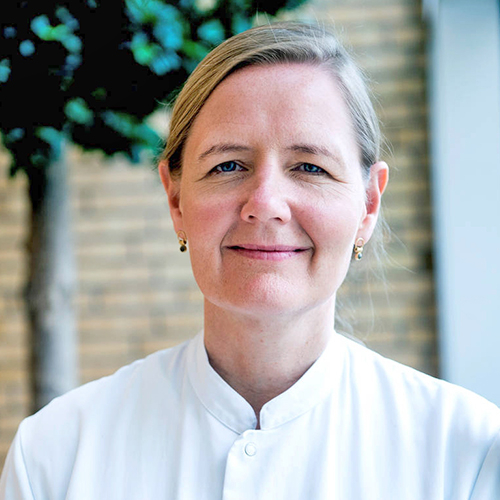

Kamilla Gerhard Nielsen is as obstetrician and psychotherapist part of the delivery unit in Aabenraa in Southern Denmark. A unit that has worked towards minimizing intervention in a safe environment with good outcome for mother and child. After joint effort from doctors and midwifes the department now has a cesarean section rate of 13 %, which is the lowest in Denmark. The rate of elective cesarean is 3 % and the unit has a high rating of satisfaction in Denmark from women giving birth.
Kamilla teaches with Obstetriwise.dk in several countries on the Upright Breech Birth, Fear of Childbirth and Occiput Posterior workshops. All theoretical and practical workshops with the aim of reducing unnecessary intervention in childbirth.
Topic: Reducing Cesarean Rates Through Teamwork and Innovation: A Case Study From Denmark - [View Abstract]
1. Describe how to identify fear of childbirth and when those conversations should take place
2. Explain the impact of fear of childbirth and ways to manage
3. Describe ways to prevent a traumatic birth
Fear of childbirth can have significant impacts and it’s important for care providers to be familiar with effective methods of management. It is central that the couple is not only met by a solution of planned cesarean section as a treatment. With tools and cases, you will learn how to help clients determine the details of their fear, how to work through previous traumatic experiences and increase the feeling of safety that is often central in the problem. Also addressed will be ways to prevent trauma during birth which can help reduce the risk of fear of childbirth in subsequent pregnancies.
Accreditation
ACM CPD Hours
This is an Australian College of Midwives CPD Endorsed Activity. This program is approved for 8 ACM CPD Endorsed Hours.
ACNM CEUs
This program is approved for 6 Contact Hours (CEs) by the American College of Nurse-Midwives. This credit is applicable to Nurse-Midwives, Certified Midwives, Registered Nurses and may be accepted by other certifying bodies.
CERPs - Continuing Education Recognition Points:
Applicable to IBCLC Lactation Consultants, Certified Lactation Consultants (CLCs), CBEs, CLE, Doulas & Birth Educators. GOLD Conferences has been designated as a Long Term Provider of CERPs by IBLCE--This program is approved for 7 R-CERPs.
CMEs - Continuing Medical Education Credits for Physicians & Nurses
The American Academy of Family Physicians has reviewed this activity and deemed it acceptable for AAFP credit. Term of approval is from 10/16/2023 to 10/16/2024. Physicians should claim only the credit commensurate with the extent of their participation in the activity. This activity is approved for 8 AAFP Prescribed CME credits.
Midwifery CEUs - MEAC Contact Hours
This program is accredited through the Midwifery Education & Accreditation Council (MEAC) and is approved for 8 Hours, the equivalent of 0.8 CEUs. Please note that 0.1 MEAC Midwifery CEU is equivalent to 1.0 NARM CEU.
Nurse Contact Hours
This nursing continuing professional development activity was approved by the American Nurses Association Massachusetts, an accredited approver by the American Nurses Credentialing Center’s Commission on Accreditation for 8 Nursing Contact Hours.
- View this presentation in its entirety, under your individual GOLD login info
- Successfully complete a post-test (3 out of 3 questions correctly answered)
- Fill out the Evaluation Survey
If you have already participated in this program, you are not eligible to receive additional credits for viewing it again. Please send us an email to [email protected] if you have any questions.
Additional Details
Viewing Time: 8 Weeks
Tags / Categories
(IBCLC) Education and Communication, (IBCLC) Psychology, Sociology, and Anthropology, Birth Complications, Collaboration of Care Providers, Fear of Childbirth, Labour & Positioning, Mindfulness & Meditation, Monitoring, Pregnancy and Trauma, Relationship HCPs/Family
How much time do I have to view the presentations?
- The viewing time will be specified for each product. When you purchase multiple items in your cart, the viewing time becomes CUMULATIVE. Ex. Lecture 1= 2 weeks and Lecture Pack 2 = 4 Weeks, you will have a total of 6 weeks viewing time for ALL the presentations made in that purchase.
- Time for viewing the talks begins once you purchase the product. For Live Webinars & Symposiums, the viewing period begins from when the live event takes place. Presentations can be accessed 24/7 and can be viewed as many times as you like during the viewing period.
What are bundled lectures?
- Presentations may be available individually or via a bundled package. Bundled lectures are a set of lectures that have been put together based on a specific category or topic. Some lectures will be available in both individual and lecture form, whereas others will be available only via a bundled lecture pack.
Will there be Handouts?
- YES! Each lecture comes with a PDF handout provided by the Speaker.
Some lectures include a Q&A, what does that mean?
- During our online conferences, presentations that occur live are also followed by a short 15 minute Question & Answer Session. The Speaker addresses questions that were posted by Delegates during the presentation. We include the recording of these Q&A Sessions as a bonus for you.
How can I receive a Certificate?
- If this presentation offers a certificate, once you are done viewing the lecture or the lectures within a bundle, submit your attendance record in order to be able to download your certificate. You'll be able to see which credits are offered for the lecture by hovering over the "Credits Available" link within the "Speakers & Topics" tab.
Professionals that selected this package also viewed

|
|

|









